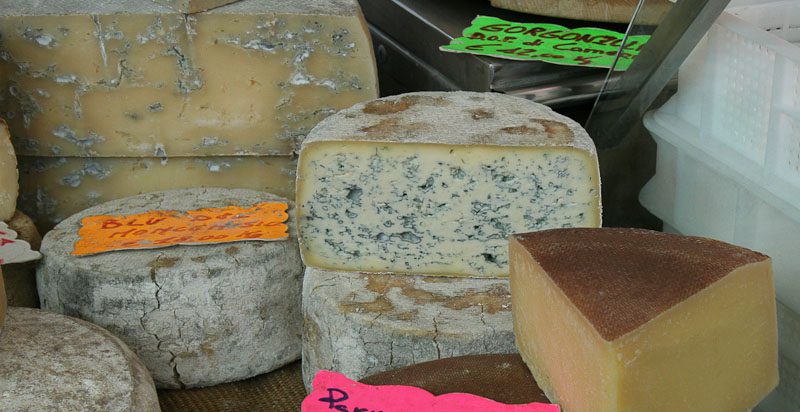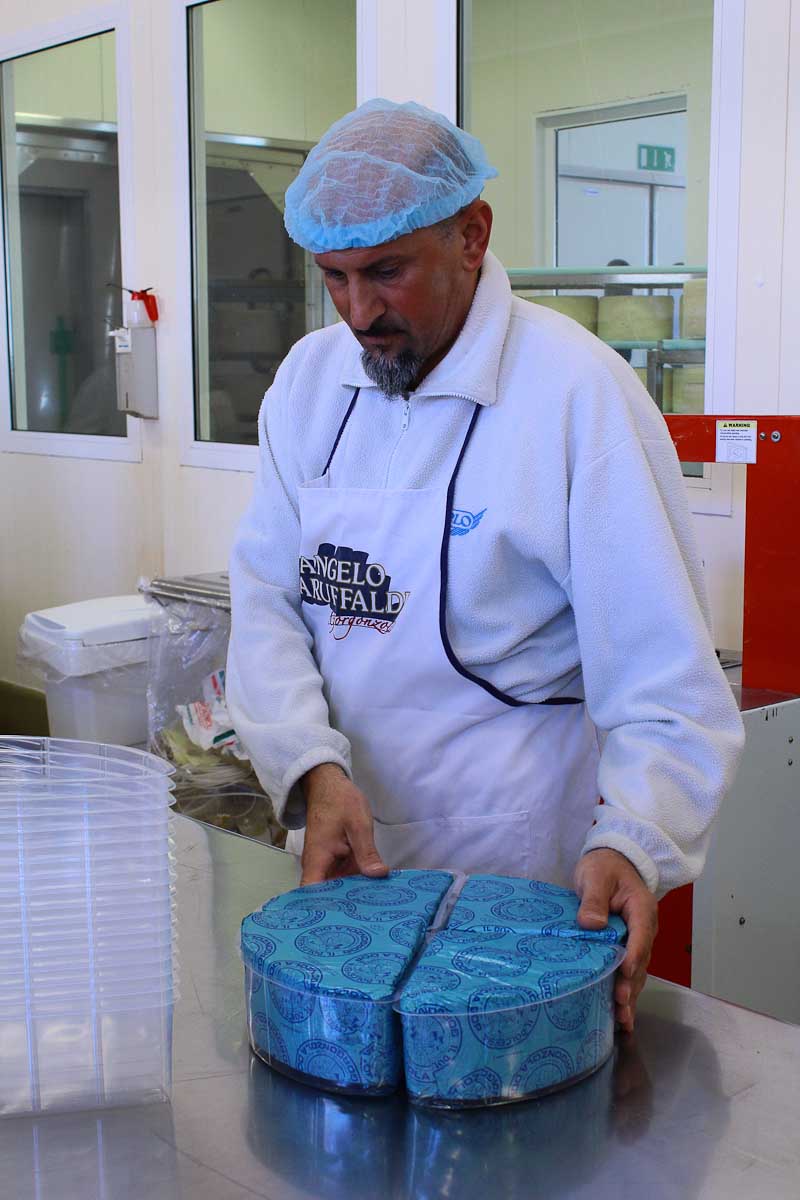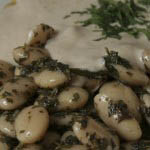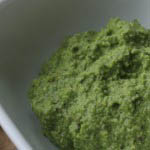Gorgonzola myths:
Celebrating the blues
The blue Gorgonzola cheese is named after a town that now forms part of Milan. But apart from that the origin of the popular blue cheese is wrapped in various Gorgonzola myths.
Once a year – over a weekend in September – the part of Milano that used to be an independent town named Gorgonzola celebrate their fabulous and fabled blue cheese. Along with the market stalls and tastings, the locals debate the origin of the cheese which – like most other great inventions – is ascribed to serendipity
A Starstruck Farmer
Some claim that the tasty blue cheese was invented by a farmer, who one night happened to see a shooting star that made him forget all about the cheese he had started to make. Next morning the curd had turned moldy and the cheese developed its blue veins.

Various types of Gorgonzola sold at a local market.
The Gorgonzola Love Story
Another and more popular legend ascribes the discovery to a dairy apprentice in love. One afternoon, he is left alone in charge of the cheese making, but instead of finishing the task he sneaks off to meet his girl friend. The next morning, fungus is spreading over the curd, but he covers up his negligence by mixing curd from the day before with a new batch. Two to three months later, when the cheese has matured, the marbled interior reveals the scam – along with a new class of cheese.
12 Gorgonzola (DOC) Provinces
Both stories are probably pure invention, but it is true that Gorgonzola is made by adding a species of mold to the fresh curd. The mold is cultivated from spores in curdled milk, when allowed to breathe in a moist environment. To supply oxygen, cheeses are stabbed to create air channels that enhance the growth of the blue fungus. There’s more about the production of gorgonzola here.
Today 12 Italian provinces are recognized under Gorgonzola (DOC) rule of origin, although the port on the Naviglio Martesana canal trace the making of blue cheese back to the 16th century, when the poet Gabriello Chiabrera described a malodorous hat as smelling like someone from Gorgonzola. This has been taken as proof of cheese making. Apparently, there is not just pride associated with edible blues.

Packaging gorgonzola at Caseificio Eredi Baruffaldi in the Novara province.
Trackbacks & Pingbacks
-
Italian Notes | Gorgonzola legends | Good Things From Italy - Le Cose Buone d'Italia | Scoop.it says:
[…] italiannotes.com – Today, 10:37 AM […]
Leave a Reply
Want to join the discussion?Feel free to contribute!
Leave a Reply Cancel reply
This site uses Akismet to reduce spam. Learn how your comment data is processed.




It took us a lot of practise to enjoy gorgonzola. For years, I couldn’t even sniff it but now it’s most palatable! :)
Julia
And of course it is recognized as Denomination of Origins as being produced using the milk of the cows of that specific region and with the addition of ferments and moulds typical from that area. So the DOP mark everywhere. Apparently there is even a “Donominazione comunale” – which I didn’t know about – to allow small councils to produce it and call it gorgonzola.
:D
I love Gorgonzola, especially as a pasta sauce, but I had never thought about it’s origins before. I like the popular legend and will think about that every time I eat blue cheese from now on.
I love Gorgonzola, and love this post. I had never heard those legends before, thanks for sharing. Now I think lunch will be some blue cheese, olives, a pear, a walnut or two–yum.
Well, that large chunk of cheese is just glorious – you have done it again. You’ve added yet another place I want to be at a specific time of the year. And I enjoyed the stories about the origin of Gorgonzola cheese. What fun. Thank you for a most enjoyable post.
Love the second explanation for the origin of the cheese. It’s always a love-affair that creates new things…
I wonder whether adding mold to cheese curd was a planned experiment, or simply discovered by accident as the legends suggest. Now… a nice pasta with gorgonzola for lunch, I think…
I’m highly allergic to this cheese. Does it fall under any other cheese name please? Thank you.
Sorry, can’t help you there. But perhaps somebody else knows something?